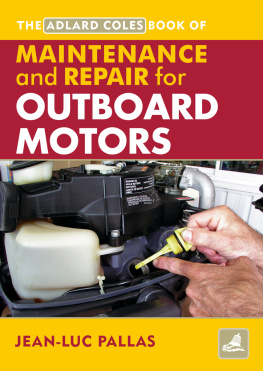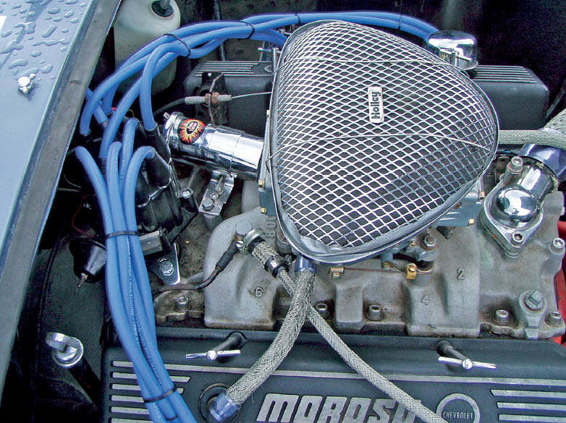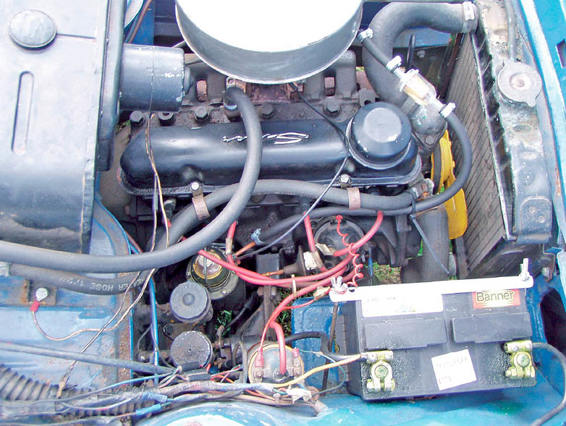First printed in paperback format in 2006.
First published in ebook format 2015 by Veloce Publishing Limited, Veloce House, Parkway Farm Business Park, Middle Farm Way, Poundbury, Dorchester, Dorset, DT1 3AR, England Fax 01305 250479 e-mail .
Ebook edition ISBN: 978-1-845848-51-4
Paperback edition ISBN: 978-1-903706-64-0
Martin Thaddeus and Veloce Publishing 2015. All rights reserved. With the exception of quoting brief passages for the purpose of review, no part of this publication may be recorded, reproduced or transmitted by any means, including photocopying, without the written permission of Veloce Publishing Ltd. Throughout this book logos, model names and designations, etc, have been used for the purposes of identification, illustration and decoration. Such names are the property of the trademark holder as this is not an official publication.
Readers with ideas for automotive books, or books on other transport or related hobby subjects, are invited to write to the editorial director of Veloce Publishing at the above address.
All Ebook design and code produced in-house by Veloce Publishing.
Contents
Introduction
INTRODUCTION
One of the great attractions of older vehicles is that they speak to us of a simpler age a time when technology was within the grasp of the man in the street. So many of the gadgets we employ in todays world are dependent on microelectronics and computerisation that we are in danger or becoming alienated from them; this is particularly evident when we consider the workings of the modern motor vehicle.
Open the bonnet (hood) of your new Ford Ciabatta or Audi Doodi what can you see? Are any of the components readily recognisable? And if they are, can you, as the owner, service or replace any of them?
When my own Audi A1 took a hit, its brain put the car into emergency drive mode, which in common parlance meant that it drove like a pig. I do, of course, accept that in doing so it may have protected some of its workings, and although resetting the ignition back to normal took my local main dealer a few minutes, it required a machine which cost more than the car is worth.
A look inside modern Audi engine bays reveals ... nothing!
This lovingly maintained Herald reads like a text book. Which electrical components can you name at a glance?
OK, how does this compare when we examine the business end of our 67 Anglia, E-Type, or Corvette Stingray? Usually this will present quite a different picture. In no time at all the familiar family of parts will reveal themselves sparkplugs, distributor, coil, HT leads, starter motor etc and all of them just waiting for us to rip them out and tinker with them on the kitchen table! And tinker we must, if we are to get the most from our beloved classics for maintenance is the key to successfully running an older car.
Back in the days when many of our cars were current or simply a bit old, reliability and service intervals were very different to those which we know regard as normal. In almost any situation it was perfectly acceptable to excuse tardiness with the words sorry, the car wouldnt start.
Similarly, up until the early eighties, it was not unusual for my neighbour to turn up on the doorstep of a morning asking for a bump-start; luckily we lived at the top of a hill. (Though, obviously, not so lucky if the damn thing didnt actually fire on the way down!)
American muscle relies on familiar components.
The much-loved Ford Anglebox.
This beautiful E-type has shiny goodies on display.
By way of a comparison consider this ... Those of us who like to service our cars ourselves will probably think in terms of cleaning and gapping our sparkplugs on a yearly basis, whereas, according to my copy of The AA Book of the Car (which dates back to 1970), most sparkplugs have a recommended service life of 10,000 miles; but it is advisable to remove, clean and refit them every 3000 miles probably more often if the engine is in poor condition. To put it another way, at one-hundred thousand miles, yesterdays engine would be at the end of its life, while todays Cadillac would be due its first major service.
THE AIM OF THIS BOOK
As I have said, cars we know and love speak to us of technology that could be grasped by anyone. Simple electrics, such as we will be dealing with, require what is known as sequential logic which is to say straight-forward reasoning. With an average tool-kit, a little bit of common sense, and this book, you should be able to tackle pretty much anything.
A LITTLE KNOWLEDGE ...
... is a very handy thing, and could save you a lot of grief! Here are two real life examples:
1. Many years ago I drove an Imp; it was a lovely little thing, but during a particularly cold spell became a bit temperamental. Sometimes it didnt want to start and other times it died for no apparent reason. One night I noticed sparking from the gear shift what did this mean?
Answer. The earth strap, which returns the ignition voltage, had broken and so the current was taking any path it could back to the battery via the bodywork. A new strap cost me a couple of quid.
2. More recently, a friend of mine who runs a fleet of limousines was having trouble with an old Excalibur this, in essence, is an 84 Lincoln town car. The problem was that the batteries kept going flat. I say batteries because it features two huge units, which are located under the front wings and are a real pain to get to. After replacing the alternator at great expense and hassle, he then replaced the batteries and an external voltage/currrent regualtor (which was part of the limo conversion). All of this was to no avail and the damn thing would not hold a charge.
Answer. The problem lay in the tiny little tell-tale lamp on the dashboard. It turns out that the if the bulb (approx value one peanut) is blown, then the whole charging circuit fails.
BACK TO BASICS
Should you not be familiar with electrics, fear not: I will assume no previous knowledge and, for the sake of clarity, I will go through the car system-by-system and component-by-component. If that still leaves you wondering, dont fret I will start with basic electrical and circuit theory atoms, molecules, electrons and the like.
RANGE OF MODELS COVERED
I have aimed this work at the owners of mass-produced cars from the fifties to the seventies, though any vehicle which relies upon electrics as opposed to electronics will be covered to some extent. The information within the book could, for example, be used to service an eighties VW Golf or a thirties VW Beetle.
As the scope of what is termed a classic is forever moving, no work can ever hope to cover everything. I have not attempted to get involved with fuel injection, as anything other than the very early systems will tend to be electronic this is a book on electrics.
Please note that any generic book can only give typical values when it comes to things like regulator, cut-off voltages or sparkplug gaps. I will distil the information from a variety of British classics and give you the salient points. Dont worry, you will easily make this book work for you.
Next page





![Shanks - Essential bicycle maintenance & repair: [step-by-step instructions to maintain and repair your road bike]](/uploads/posts/book/235248/thumbs/shanks-essential-bicycle-maintenance-repair.jpg)










